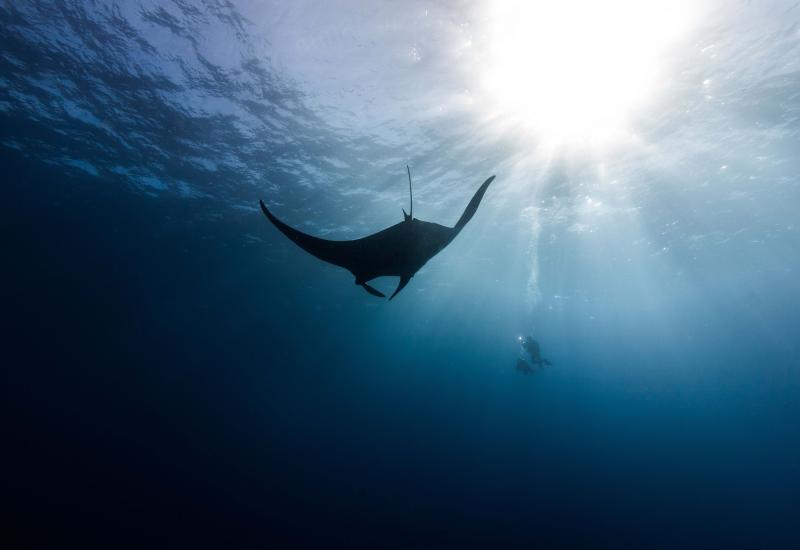Perks of Exploring Socorro With a Dive Club
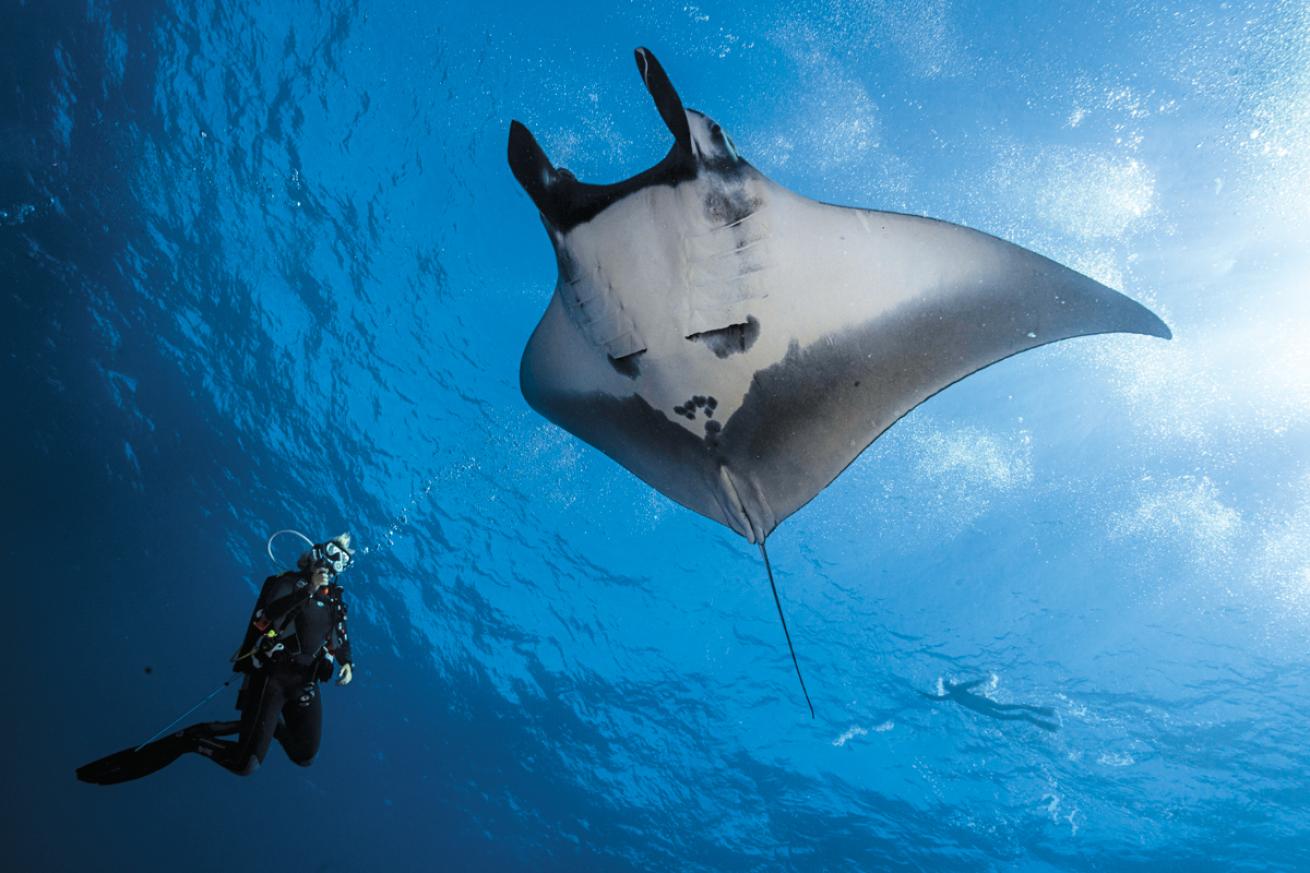
Jay ClueGiant mantas aggregate off Socorro, one of the Revillagigedo Islands roughly 300 miles southwest of Cabo San Lucas.
Imagine you had unlimited free flights to the world’s best dive destinations. Cozumel, Indonesia, the Florida Keys, Guam, Palau, Fiji, Yap, the Red Sea—they’re all on the table, and you don’t have to fork over a dime to get there.
That’s life for Rick Levy. It’s one of the perks of working as a pilot for a major airline, and he’s turned that fringe benefit into one of the world’s largest dive clubs.
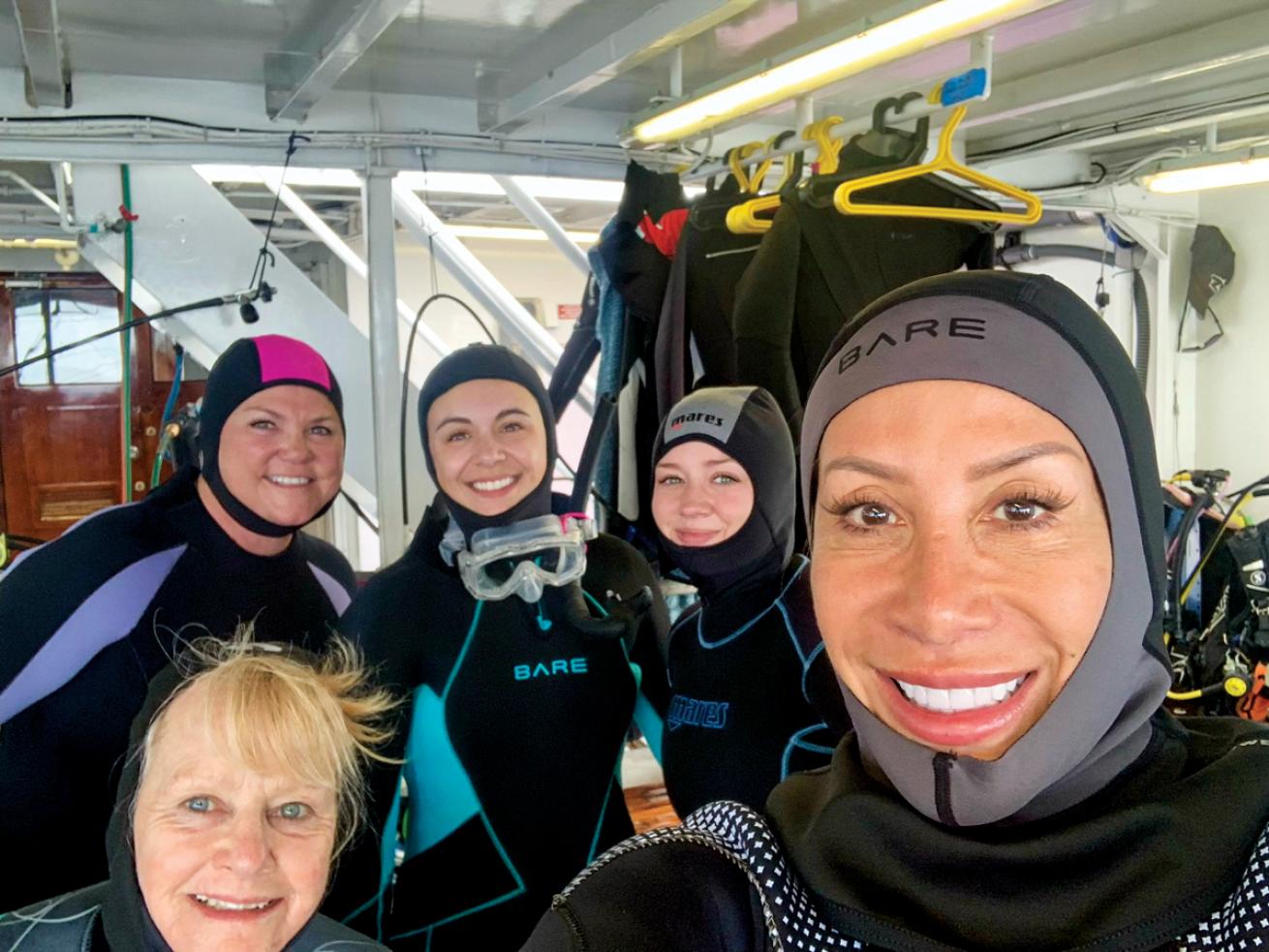
Courtesy Yvonne RichardsonThe author (middle) poses with members of the United Airlines Dive Club aboard Nautilus Explorer, which the club booked for a private trip.
Back in 2002, Levy teamed up with fellow scuba diver and Continental Airlines employee Paul Harshman to pitch the idea of an employee dive club. Soon the club was ready for takeoff, with a logo, website, T-shirts, and banner provided by Continental (which is now United Airlines).
A year in, they arranged for Phil Hetherington—owner of Sugar Land Dive Center just outside of Houston and PADI course director at Cozumel Dive Academy—to spend 24 hours underwater to raise money for WeCare, a fund for airline employees struggling financially due to a natural disaster or personal hardship. The resulting media coverage set the club on a steady growth trajectory that continues to this day. “We were getting interest from employees all over the world,” says Levy. “Now, 22 years later, we have just under 2,000 employees and their families as a part of our dive club.”
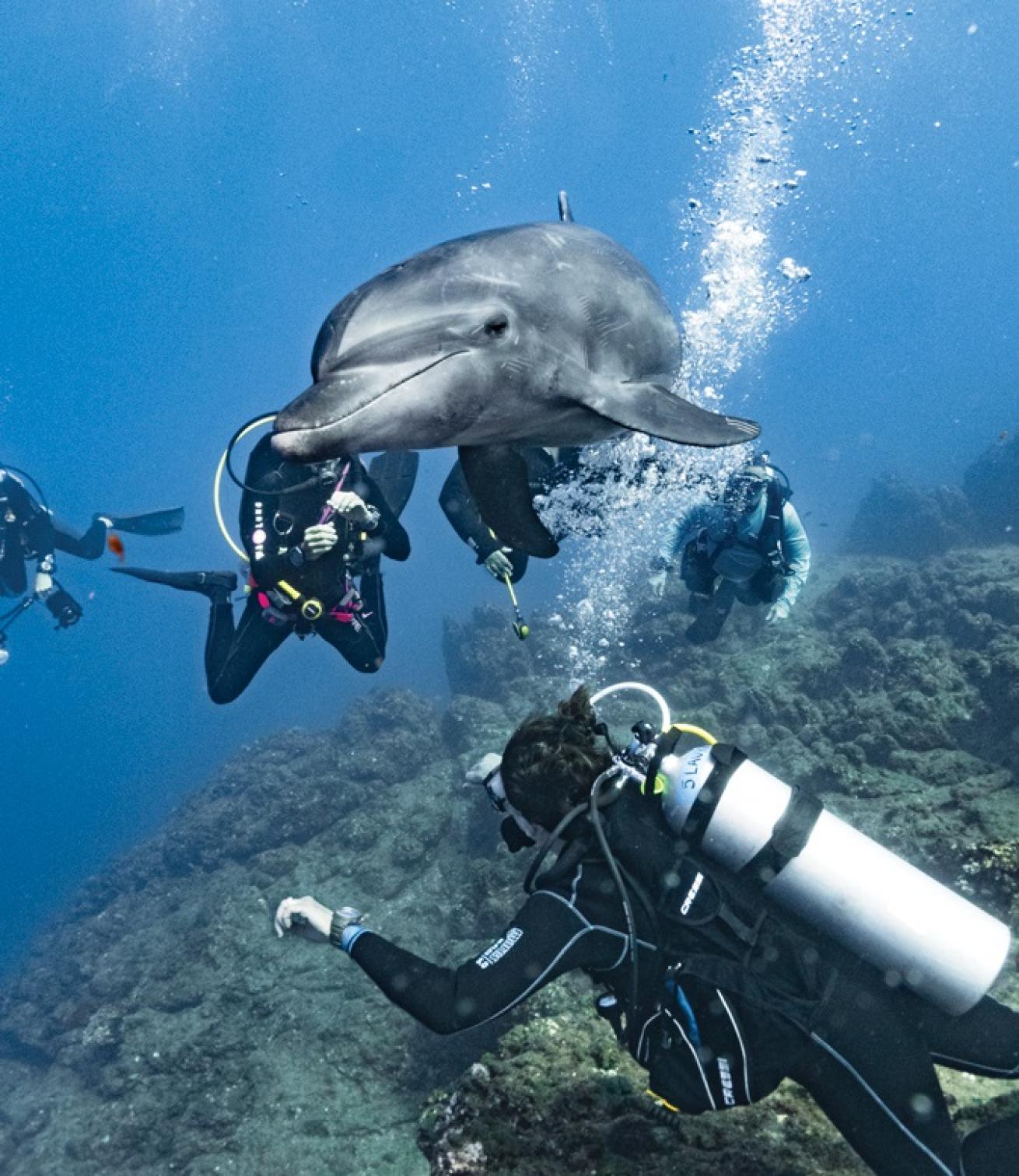
Howard RodmanMarch is also peak dolphin season in Socorro.
Join the Club
I spot Levy as soon as I walk into Captain Tony’s, an open-air fish joint at the Cabo San Lucas pier in Baja California Sur, Mexico. We’d first met the year before at Bahamas Dive Week, where Levy was scoping out potential dive trip locations for the club with longtime dive buddy Rick Baker. The Rick and Rick duo estimates they’ve been on more than 60 dive trips together. Baker, despite not being a United Airlines employee, holds the proud status as Dive Club Member No. 3. That’s the advantage of being Levy’s friend—while the club is for United employees, he occasionally welcomes others into the fold.
I’m among the lucky ones. After a week of diving together in Grand Bahama, Levy offered me the last bed on their upcoming Socorro liveaboard.
Related Reading: Overcoming Fear: From Scuba-Phobic to Manta Ray Expert
I couldn’t say yes fast enough.
Socorro is an island in Mexico’s Revillagigedo Archipelago, a UNESCO World Heritage Site more than a full day’s sailing southwest of Cabo. Pelagic encounters can happen any time of year, with humpbacks migrating through from January to early April and whale sharks visiting the islands in November and December. We’ve arrived in March, peak season for pods of dolphins and oceanic mantas with wingspans that can reach 29 feet.
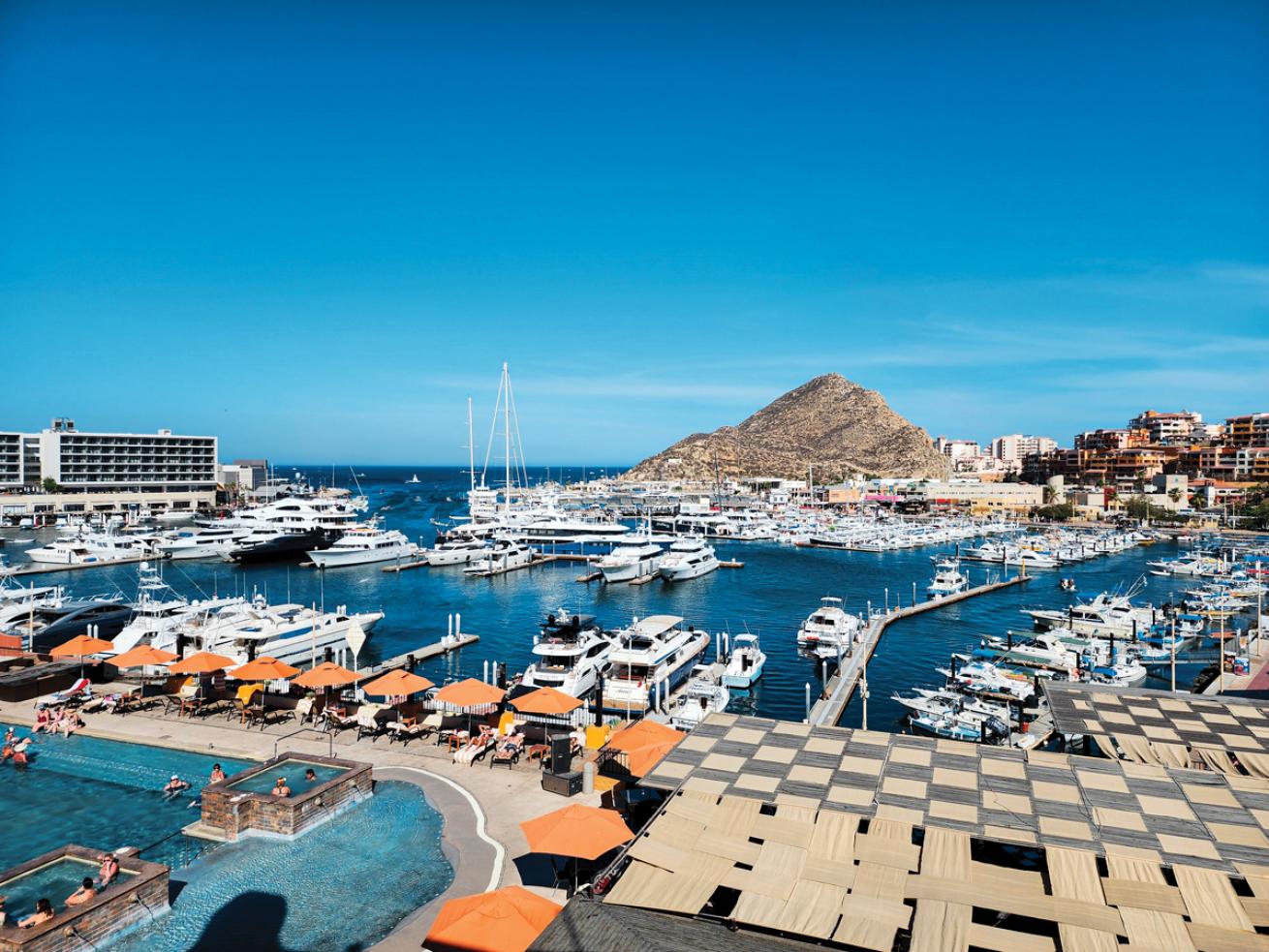
Marcus ValentinoThe marina in Cabo San Lucas.
The club has rented the entire Nautilus Explorer vessel for an exclusive sailing. This is something that Nautilus Liveaboards does semi-frequently, I discover—Cabo San Lucas–based dive shop Dive Ninja Expeditions and Girls That Scuba ran a joint trip to Socorro on the same boat not long before I climbed aboard.
Divemaster Elaine tells me on the second night of our trip that she’d never heard of dive clubs before she began working for Nautilus Liveaboards. Now two years into a one-month trip to Mexico from the U.K., she’s come across a lot of them. “They’re great. So many really different people come together from all over for this one thing they love."
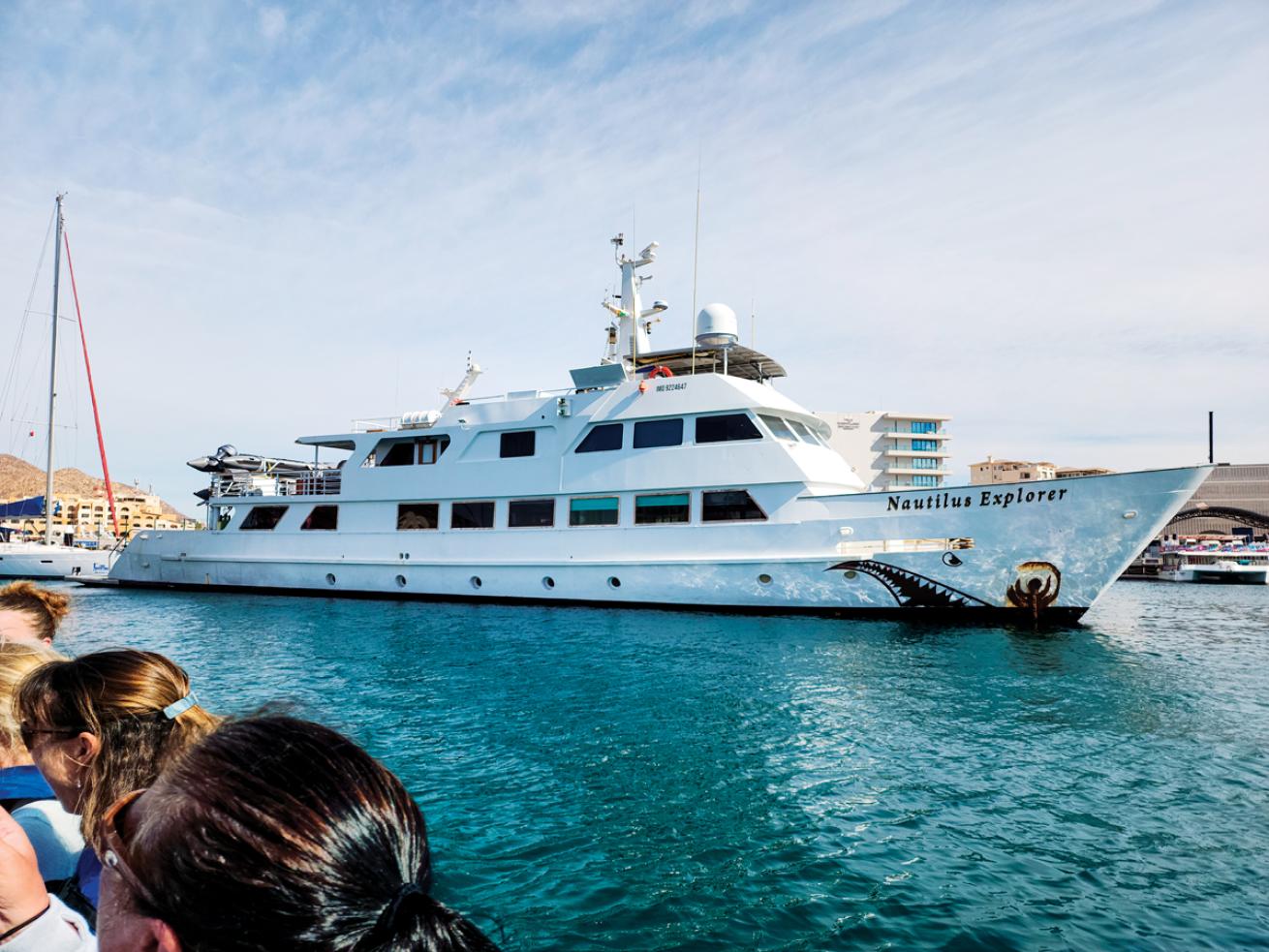
Marcus ValentinoThe marina in Cabo San Lucas.
This is my first time traveling with a dive club. Most of my trips, scuba and otherwise, have been solo. And I’ve loved it—I would have missed so many incredible experiences if I skipped trips because I didn’t have somebody to join me. But backpacking without backup isn’t for everyone. “For many people, the idea of going on a dive trip solo is daunting,” says Zach Pavkov, head of operations for PADI Club, which puts on its own dive trips for members. “Where do you stay? Who do you dive with? Will you have a dive buddy when you get there? The logistics quickly get overwhelming.” Often, dive clubs exist to smooth out the process of planning a trip alone, he says.
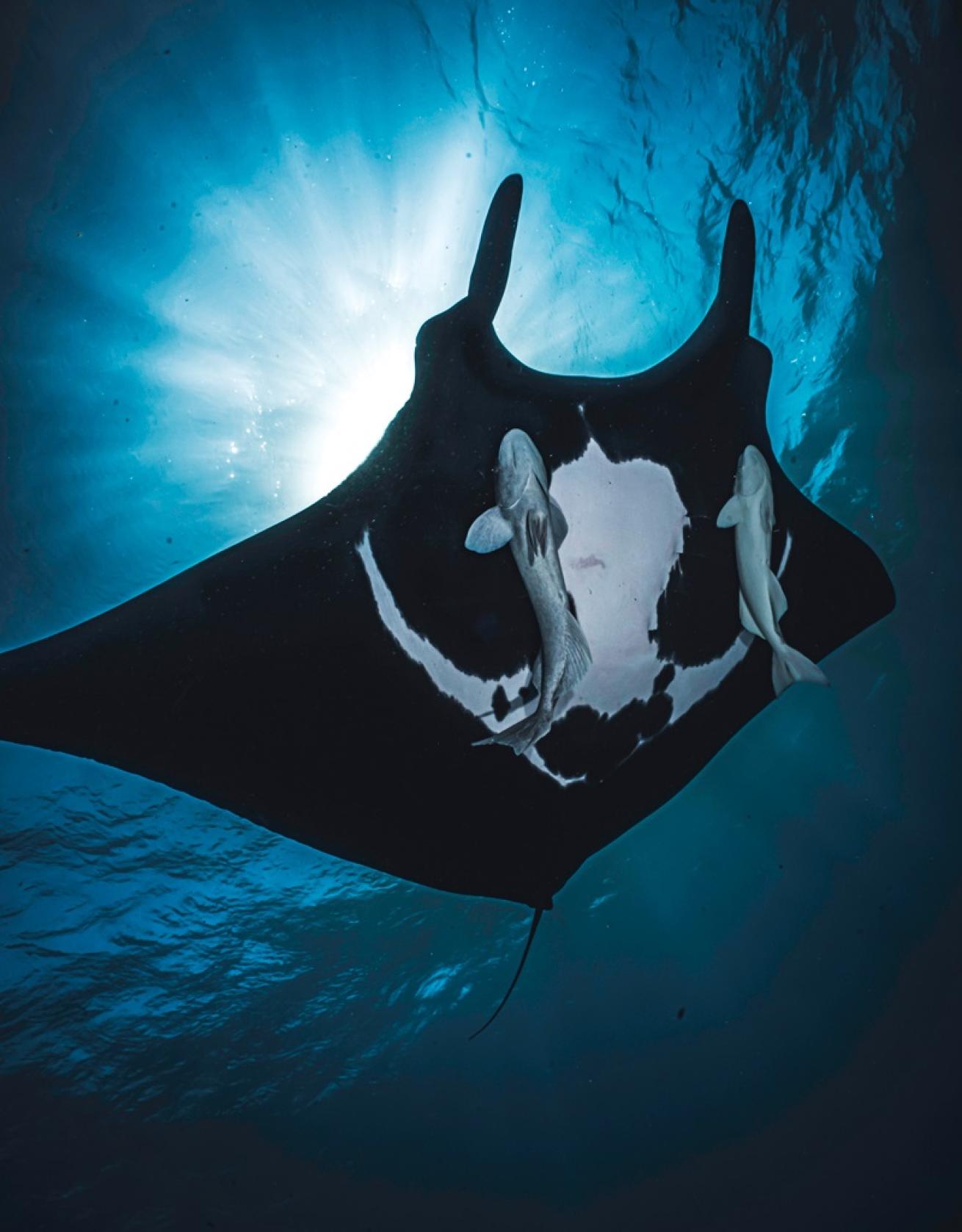
Jay ClueA giant manta enjoys the services of remoras at a cleaning station.
The advantages of a dive club become apparent as soon as I walk into Captain Tony’s. We aren’t even on the boat yet, and I’ve already reunited with Levy and Baker, and met Hetherington (of 24-hours-underwater fame). Over dinner, I hear how everyone has spent the day keeping tabs on a couple whose luggage got lost in Mexico City for 24 hours, arriving less than two hours prior to the dive briefing. (Apparently even airline employees aren’t safe from luggage woes.) My marina reunion is quickly followed by dive club swag. The good vibes grow as soon as all 27 divers board Nautilus Explorer, where everyone promptly bursts into a champagne-fueled rendition of “Happy Birthday” for one of the members.
And of course, a chief advantage of a dive club is that it leads you to experiences you’d never have on your own.
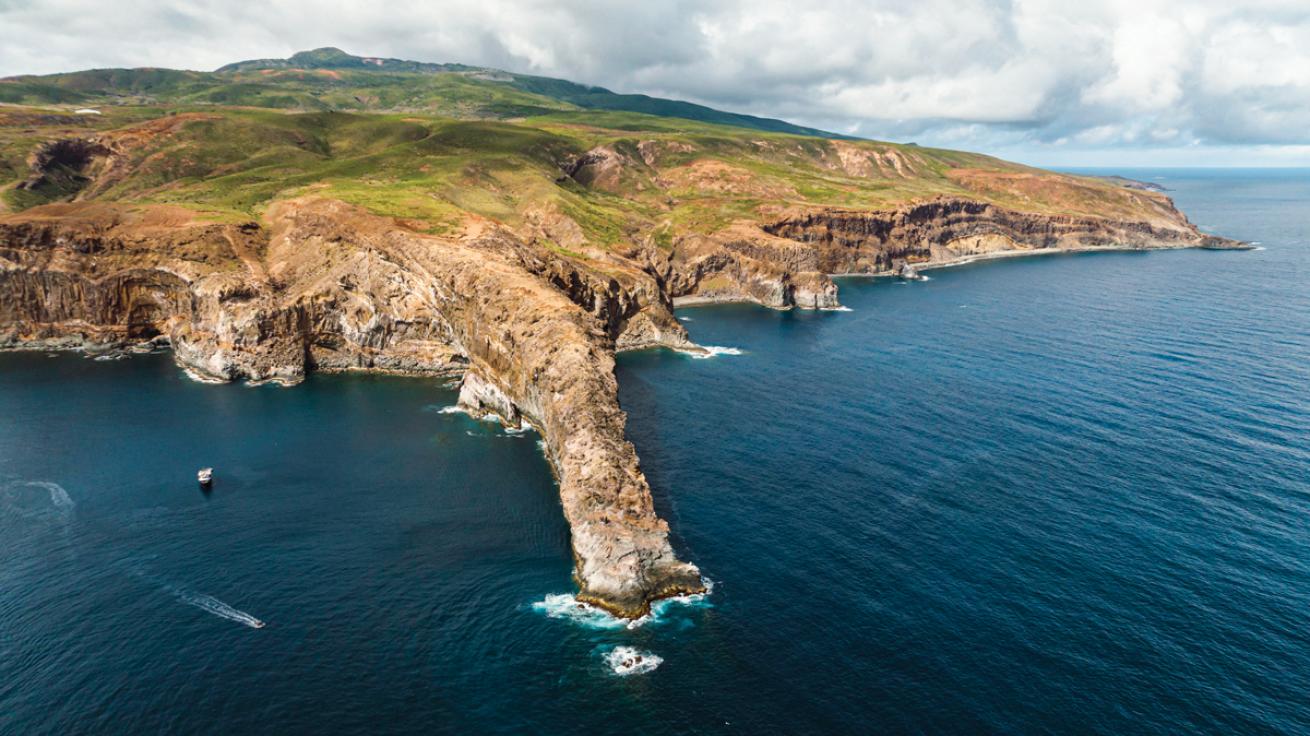
Jay ClueCabo Pearce juts from the rugged coastline of Socorro Island.
Making Friends Below
I’m not going to try and convince you these animals are cool,” says our divemaster Pascal during the daylong crossing to Socorro. “They’re going to do that themselves.”
Pictures of majestic giants flick across the screen in the salon, where we’ve all gathered for Mantas 101. His presentation paints a compelling picture: Mantas have survived four mass extinctions. They have the largest brain-to-mass ratio of any fish, and they can even recognize themselves in a mirror. Groups will swirl around one another to create a plankton tornado for lunch. Their skin is covered in small indentations that create a personal vortex, minimizing friction so they can glide through the water with ease. Their “devil horns” are actually cephalic fins, which they can use to funnel plankton or relax during a cleaning.
"We are the aliens,” Pascal says. “They should be afraid of us.” But that’s not the case. “Most of the time, it’s not necessary to approach. They will come to you.”
And throughout the week, they do. I watch again and again as other divers emerge from the water starry-eyed and raving about a manta swooping directly at them. I have my fair share of incredible sightings on my own dives, yet I can’t help but envy those up-close encounters.
Then, on the last day, I have the experience every Socorro diver envisions when buying a liveaboard ticket.
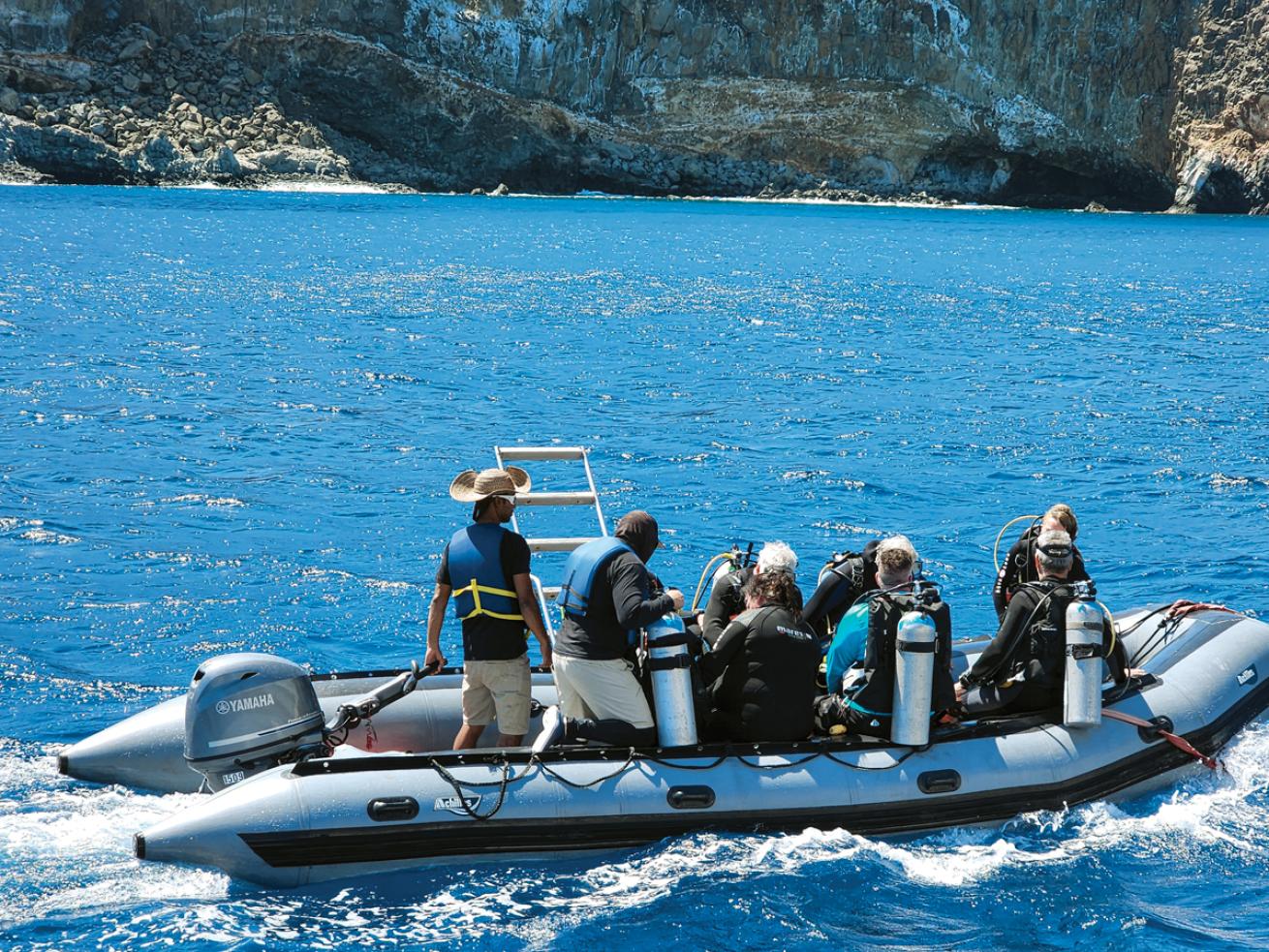
Marcus ValentinoDivers head to the next site aboard a rigid inflatable boat.
The dive starts uneventfully. Forty minutes of low viz has the group nearly ready to call it. Where the first dive here at the Boiler was a flurry of mantas and dolphin pods, this one is all currents and plankton. Elaine finds an octopus to entertain the group, and we all turn our backs to the blue.
Naturally, this is when a manta decides to swan into view. Elaine waves frantically and swims around in front of us, pointing away from our cephalopod consolation prize.
We turn just in time to watch the manta soar away through the fog below us. As it fades, everyone turns away. But I wait. And wait. Straining my eyes, I hope it’ll turn. It’s the last day, my last chance to swim in tandem with these majestic creatures. Maybe it’ll turn. Maybe this is the moment a manta decides to come back and play.
Against all odds, it is. He arcs in a semi-circle, soaring up the sloping rock in a flight trajectory straight toward me. I hold still, and he glides directly overhead.
I slowly ascend, internally screaming. I come as close as I dare below this gentle giant, stopping when I judge myself to be within 10 feet of him. I begin finning on my back to stare up at the hulking form above. So enormous is his wingspan that only after the dive, when I see a video of my encounter, do I realize I stopped about 30 feet below him, not 10.
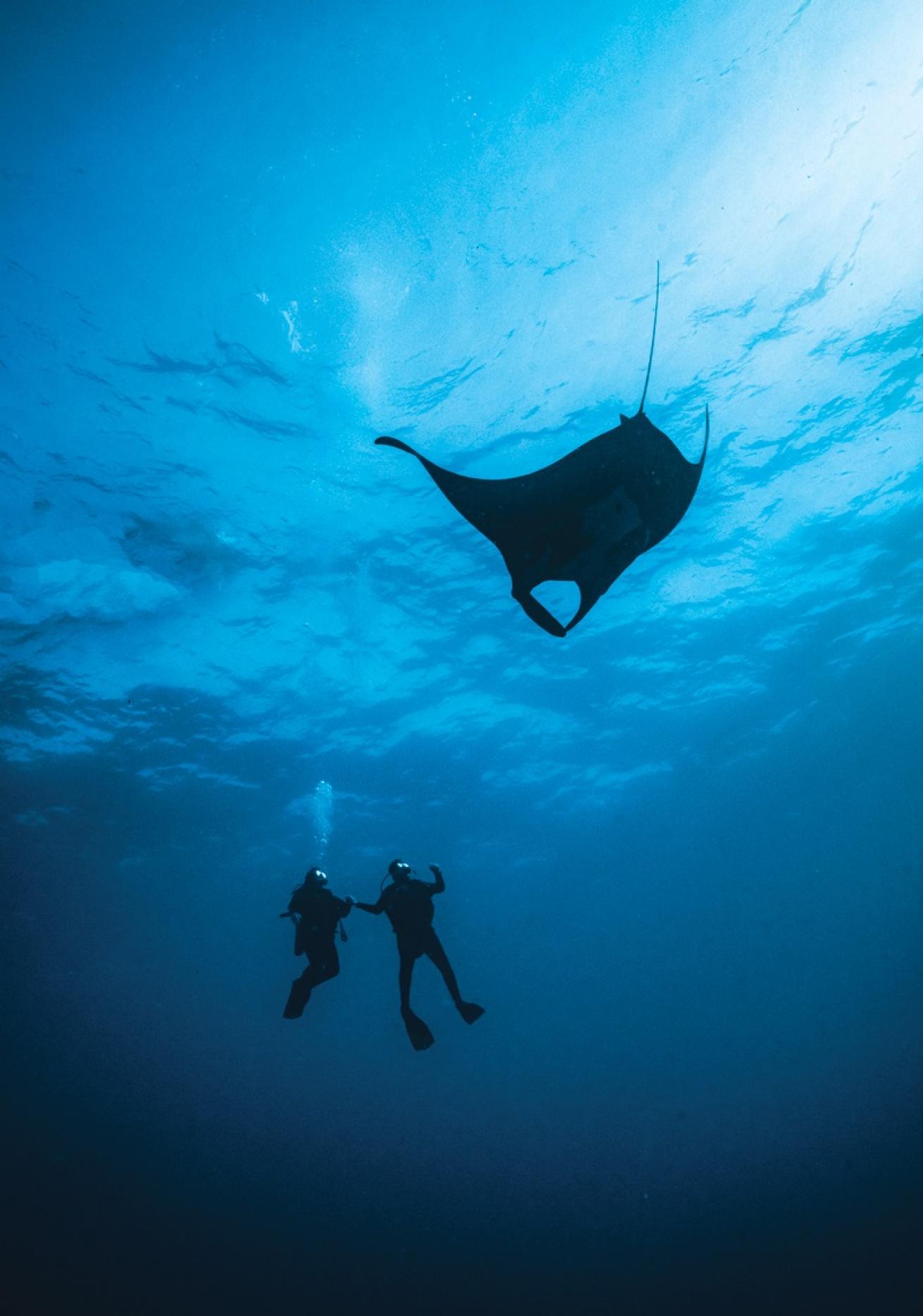
Jay ClueA giant manta comes face to face with a pair of divers.
Even from this distance, he fills my frame of view. I study the one-of-a-kind black-and-white pattern on his supple fins. The strength of his wings is apparent. He seems to move perpetually through the water with one flick of his fin.
I am far less graceful, and struggle to hold my inverted orientation. I want him to stay close forever, but I worry about bumping into him. I pull away, but he doesn’t flee like I expect. He stays steady as I pull up and level with his soulful eyes. I stare, enraptured, as his small front fin twirls, wrapping over itself again and again into a stunning texture.
He gives his fin a flick and pulls ahead. I cannot match his renewed pace, so I let him go—but I don’t have to. As I twirl three times in giddy celebration, he turns 180 degrees and comes straight back to me. I drop down to meet him, stopping well away to avoid crowding him. As I stare, I see him twist his cephalic fin into a tight spiral and jerk it down. My regulator just about falls out of my mouth. It truly looks like he’s calling me over. I descend until we are equal in the water column. He hovers in place before lifting his fin up. I cock my head underneath the outreached fin to tickle his underbelly with my bubbles before he flies off into the blue.
My heart aches when he returns yet again for a third pass. I’ve already aborted three profile-dependent intermediate stops to frolic with him these last few minutes. The 30 bar left in my tank demands I finish my safety stop. Hanging at 15 feet, I wave goodbye to the giant 30 feet below, desperately wishing I could stay to play and thrilled we met at all.
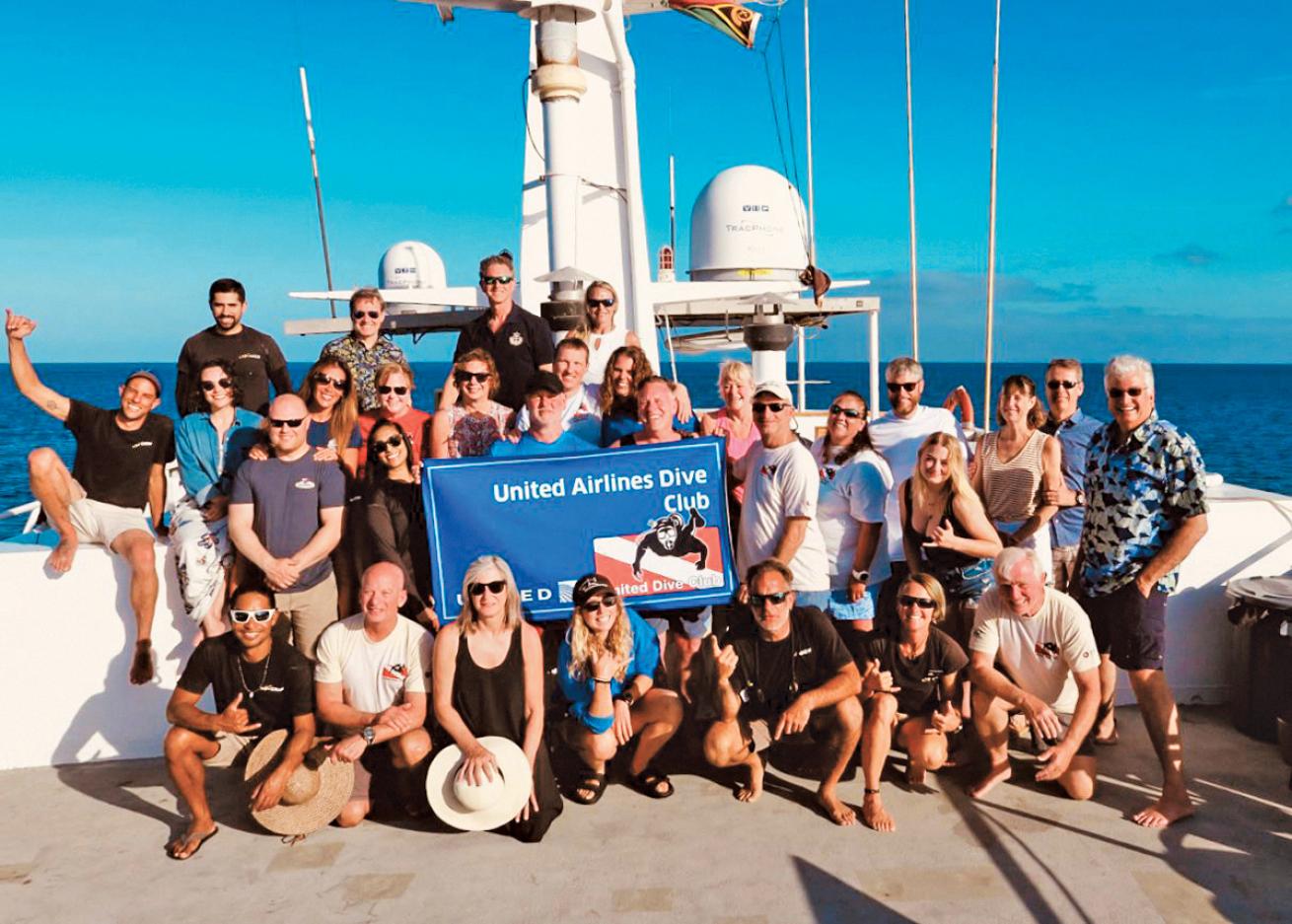
Courtesy United Airlines Dive ClubUnited Airlines Dive Club members and Nautilus Explorer crew pose for a group photo.
Community in Action
“I’m so happy for you!” my roommate and dive buddy, pilot Laura Cherry, tells me as soon as we’re topside. “I know how much you wanted that interaction.”
I beam before racing to the hot tub to tell everyone my latest fish tale. After all, isn’t one of the greatest parts of any dive reliving it with your friends?
“Camaraderie is definitely the best part of diving with the club,” says Levy. “It’s pretty cool to meet a lot of fellow employees from all different divisions and walks in the company, from baggage handlers, ticket agents, gate agents, mechanics, pilots, flight attendants—vice presidents of the company have actually gone on our trips before. And everybody in the airline shows up with a common theme of scuba diving.”
PADI’s Pavkov agrees: “My favorite memories during our Club trips often have less to do with the dives themselves than the special moments we spend topside,” he says. “People from all over the world have attended our trips, and many remain friends long after our departing flights.”
Related Reading: Swimming With Whales: Does Human Activity Affect Orcas?
Levy nurtures his community year-round. He spends hours upon hours surveying members about trip preferences, vetting locations and arranging new adventures. In between this trip and an upcoming outing to Belize will be the club’s annual week in Cozumel—a trip that would be incomplete without its traditional underwater treasure hunt and Pirate Ball. (It’s Levy, naturally, who plants the marked shells underwater for members to find and arranges for donations of dive gear and trips to serve as prizes.) It’s not uncommon for these Coz blowouts to be a diver’s first time in the water, as the club has in-house instructors that lead certifications. Levy estimates the United dive community has helped certify at least 60 open-water divers.
And, yes, the club is for United employees—but I’m not the only solo diver they’ve adopted as an honorary member over the years. There’s also Jackie, who by chance had booked a berth on a boat before the United club rented the rest of the ship. She’s been on five trips with them since, epitomizing how welcoming the group is.
Over the course of the week, I come to see that, yes, free standby flights help the United Airlines Dive Club meet at far-flung locations. And yes, topside chat involves discussions of why Chicago to Rome is the best route, or the grind of racking up the required 1,500 hours of flight time before you can apply for a commercial pilot job. But it’s the community the club provides—the incredible friendships divers find when they come together—that make the trips so special.
“I want to take a picture of this,” Laurry, a dive club member of 22 years, tells me in the salon one evening. She gestures at everyone chatting jovially. “This is part of it, too.”
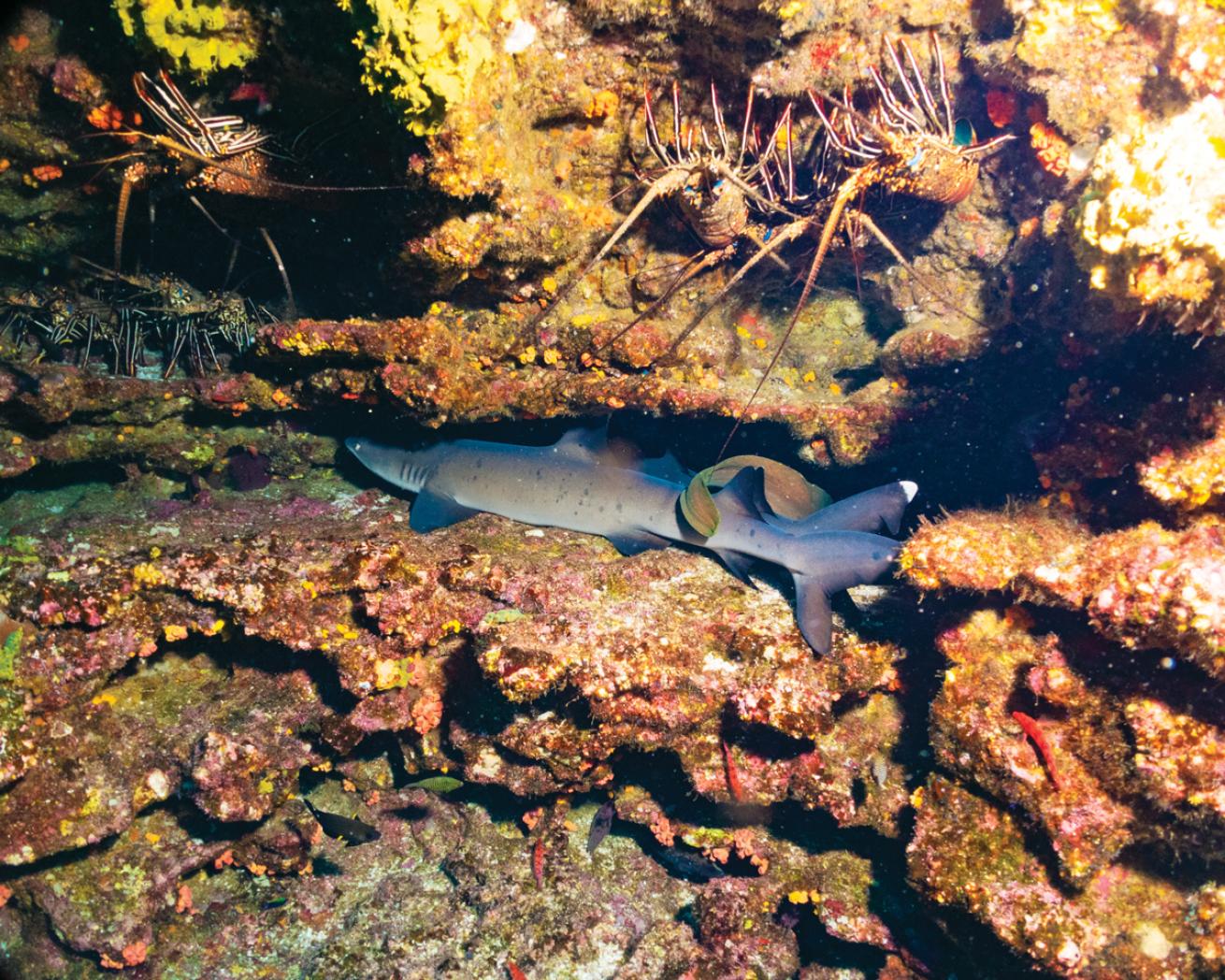
Howard RodmanA whitetip reef shark photographed on the trip.
Watching Levy nurture the community is heartwarming. You can see how important the club is to him in how enthusiastically he talks about long-time members, in his excitement as he repeatedly invites everyone to watch the slideshow he made of past trips, in the way he meticulously rolls up the United Airlines Dive Club sign after the top-deck group photo.
He says he’s coming up on retirement. But retiring from United Airlines is not the same as retiring from the United Airlines Dive Club. Far from it. On that front, Levy plans to remain in the cockpit, writing the club’s newsletters and planning even more trips. He’s going to continue growing the community. I count myself lucky—me and 2,000 other divers.
How to Find a Dive Club
Clubs are a great way to expand your dive community, skills, and experiences. If you’re interested in joining one, your local dive shop (locator.padi.com) is a great place to start. You can connect with divers in your area, support local diving, and make travel companions for far-flung trips.
Geography isn’t the only way to find a club. There are also dispersed communities that cater to specific demographics or interests, such as Girls That Scuba, an online community for female divers, or Barnacle Busters, the California-based dive club for LGBTQ+ divers and allies.
PADI Club (padi.com/padiclub) is also open to divers around the world. Membership includes a free subscription to Scuba Diving magazine, discounts on PADI Gear and courses, access to an exclusive speaker series with notable divers, Marriott points, Uber discounts, and more, as well as invitations to join Club trips.
“Many divers don’t have a ‘home club’ or group to travel with,” says Zach Pavkov, head of PADI Club operations. “We’ve created a diverse, friendly community through our emphasis on sharing adventures with like-minded, conservation-oriented divers of all skill levels.”
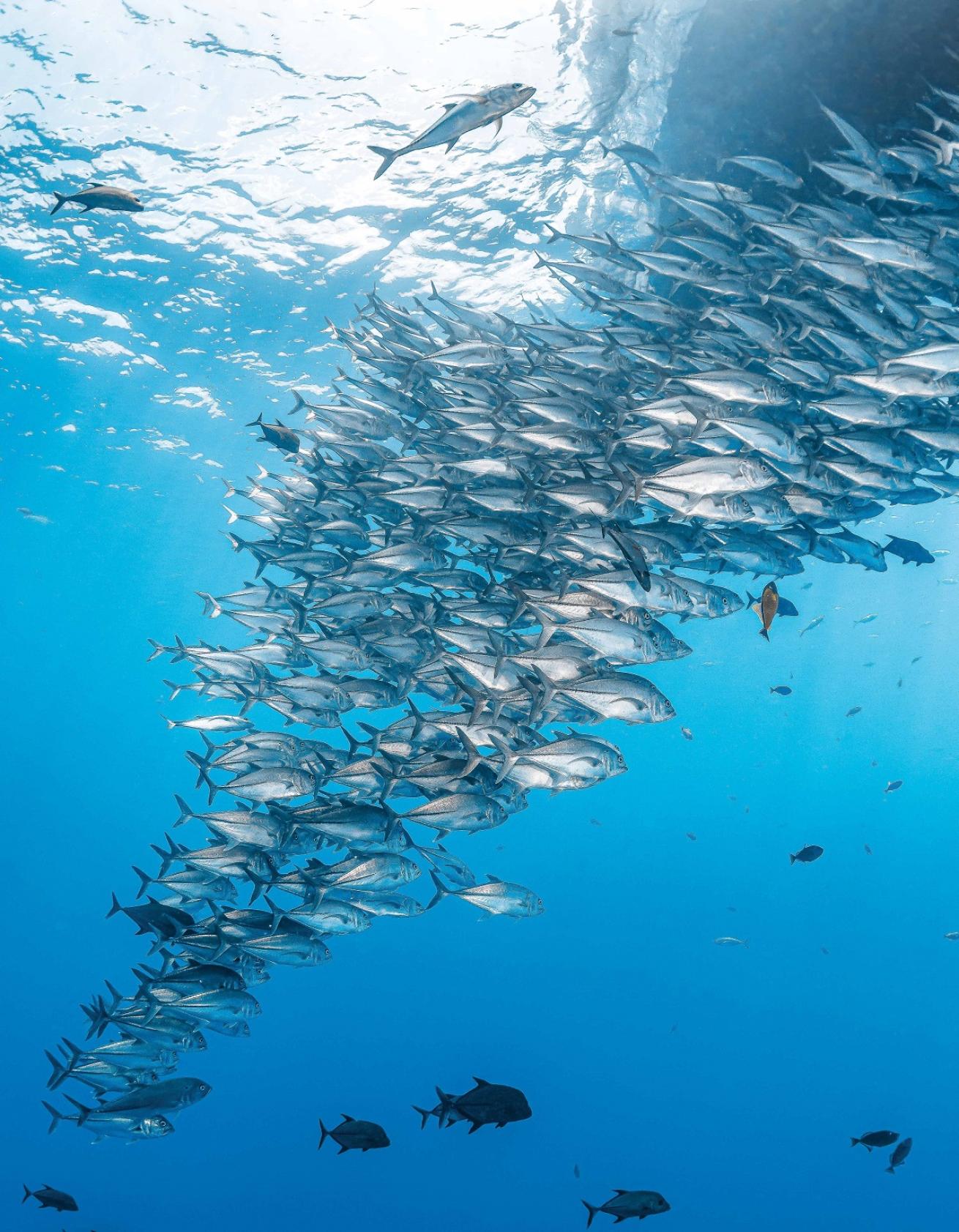
Jennifer PennerA school of jacks under the diving vessel
NEED TO KNOW
When to Go
November to May
Dive Conditions
Water temps: 82°F (November); 68°F (May)
Viz: Clear days can deliver viz past 100 feet. Plankton blooms can lower visibility to about 20 feet, but this is what draws in the large animals that make the waters so special.
How to Get There
Nautilus Liveaboards (nautilusliveaboards.com) offers nine-day, eight-night expeditions from Cabo San Lucas, Mexico. This includes five days of diving, averaging four dives a day, and two crossing days ($2,795).
Port Fee
$35, cash only, payable on board
Dive Gear
A 7 mm wetsuit, hood, and gloves are a good idea, especially as your core temperature drops throughout a week of intensive diving. All divers should have a surface marker buoy for skiff pickups or strong currents, and Nautilus lends each guest a marine GPS, their Nautilus Lifeline, for the duration of the trip.
Recommended Certifications
Due to the strong currents and effectively limitless depth at some sites, this is an advanced dive trip. It is recommended divers have their PADI Advanced Open Water Diver certification, as well as the Deep Diver, Drift Diver, and Enriched Air Diver specialties.

